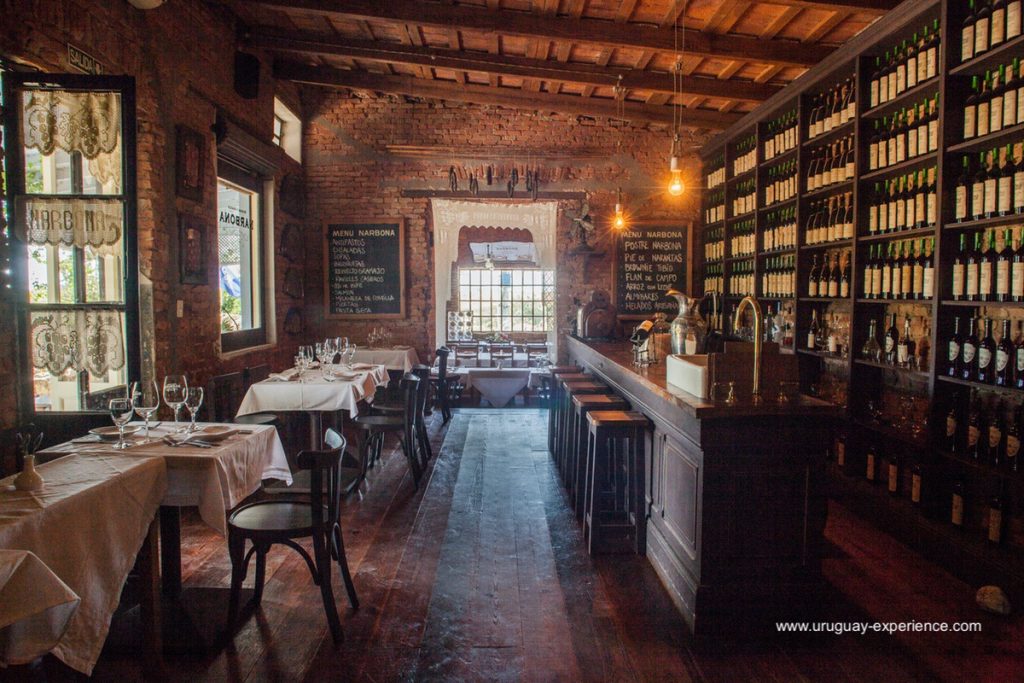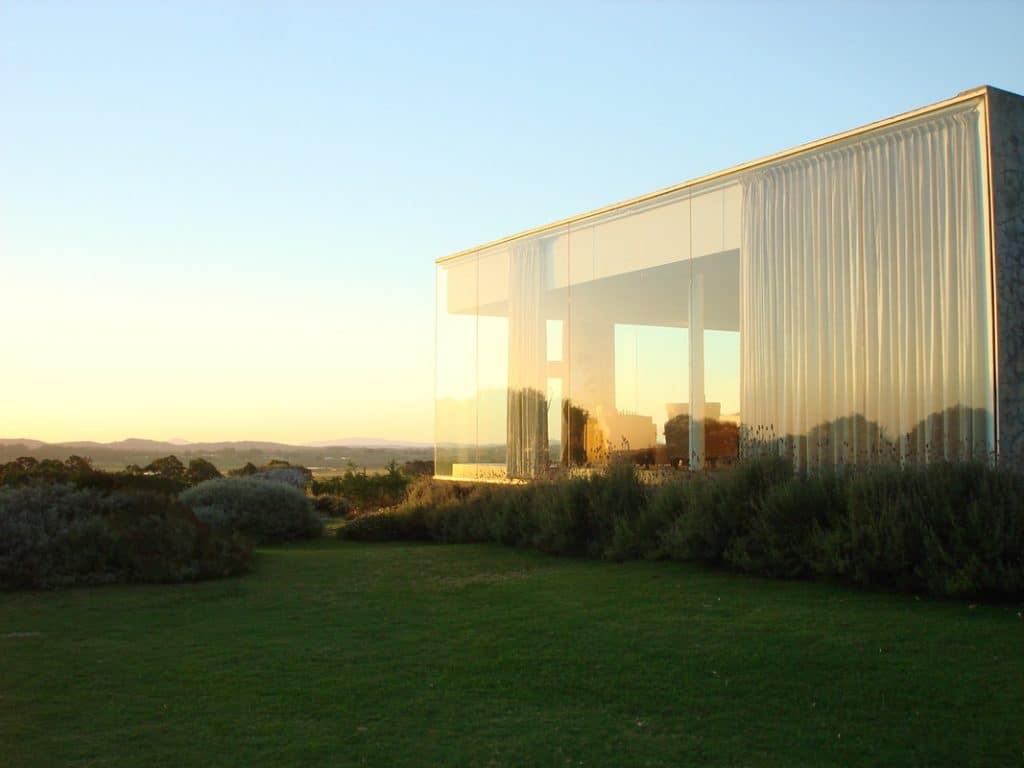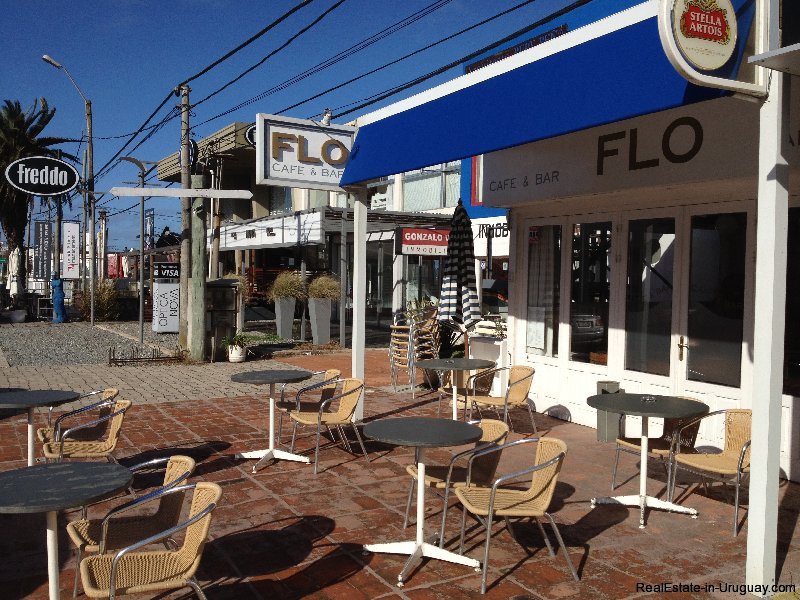SURFER-TOWN LA BARRA
La Barra, also known as the surfer town, is situated to the east of Punta del Este. It is a peaceful village during the off-season but comes alive during the summer months. Due to Punta del Este’s increasing international significance in recent years, La Barra has undergone a remarkable transformation and has become a sought-after destination.
The Puente Leonel Viera, a distinctive bridge that gracefully stretches over the Rio Maldonado, has earned the playful nickname of the Bridge of Laughter – Puente de la Risa – due to the delightful and exhilarating feeling it evokes while driving across.
Renowned for its steady surf breaks, La Barra is a cherished destination among surfers, boasting not only consistent waves but also a vibrant art scene. The town is dotted with galleries and showcases the creations of talented artists, displaying a captivating array of paintings and sculptures.
La Barra effortlessly blends tranquility and charm by day with a vibrant energy that comes alive at night. It holds an undeniable allure as one of the most sought-after destinations in the region. While offering a more laid-back and rustic lifestyle than the bustling center of Punta del Este, La Barra manages to maintain the exclusivity and prestige that characterize this area. With its expansive surfing beaches, lively nightlife scene, exquisite cuisine, and a penchant for hosting private and themed VIP parties, La Barra truly has it all.
In stark contrast to the towering high-rise buildings found in Punta del Este, La Barra is embraced by sprawling coastal estates and modest, low-rise homes. Its main street serves as a focal point, inviting visitors for leisurely strolls, where they can explore chic boutiques, art galleries, cozy cafes, and enticing restaurants. The ever-changing landscape of hot nightclubs, which may alter names and venues each season, adds to the allure of this charming town, making it a favorite hotspot for unforgettable summer nights.
Situated approximately 144 kilometers from Montevideo, La Barra beckons travelers with its year-round appeal. Surfers flock to its shores, embracing the waves not only in the summer but also during the winter months. Spring brings an added enchantment as whales make their majestic appearance. Beyond its natural wonders, La Barra boasts a captivating charm manifested in its vibrant architecture and historical roots as a cherished fishing village. During the quieter low season, this aspect is particularly cherished by visitors seeking a tranquil escape, with fewer crowds to contend with. The added advantage of its proximity to Punta del Este and José Ignacio further solidifies La Barra as an exceptional destination that can be savored at any time of the year.
HISTORY
The origins of La Barra trace back to the late 19th century, although the exact nature of its establishment remains a topic of debate. While some argue that it originally served as a fishing village, others contend that it emerged as a summer retreat for the families of San Carlos. However, historical records indicate that dating back to colonial times, the area had been sought after as a hiding spot for pirates. Tales of shipwrecks along its coastline have only added to the intrigue, with whispers of a hidden treasure circulating among locals.
The legend speaks of a pirate named Francisco Tournier, who purportedly buried a valuable treasure in one of the islands of the Maldonado’s Arroyo. Numerous individuals embarked on treasure-hunting expeditions over the years but were met with disappointing results. However, stories persist that in 1888, a group of explorers vanished without a trace, leading some to believe that they had indeed discovered the elusive treasure and escaped with it. This intriguing account has left its mark on La Barra, giving rise to the area now known as El Tesoro (The Treasure).
BEACHES IN LA BARRA
Those who choose to spend their holidays in La Barra often take the opportunity to explore multiple beaches during their stay, ranging from La Boca to José Ignacio, in order to maximize their vacation experience.
La Boca
Situated at the mouth of the Maldonado stream, this beach remains bustling during peak season, yet still retains a welcoming, family-friendly atmosphere. It is also a favored spot for fishing enthusiasts. During the winter months, surfers often frequent La Boca, benefiting from ideal conditions for their sport at this time of year.
Montoya
Found at the furthest end of La Barra, Montoya is a spacious beach characterized by its coarse sand. It becomes quite crowded in the summer months. From Montoya beach, one can embark on a leisurely seaside stroll that ultimately leads to Manantiales Bikini Beach.
SHOPPING
Many diverse shops, pubs, and galleries line the main street, route 10. It is highly recommended to explore this lively road more than once, as it showcases different charms throughout the day. During daylight hours, it offers a perfect shopping experience, while after sunset, it transforms into a different atmosphere altogether.
Shopping OH
Shopping Center OH, created by the talented Uruguayan architect Carlos Ott, this commercial center stands out with its unique aesthetics that cannot be found elsewhere in the country. Constructed using high-quality materials and featuring outdoor corridors, it invites visitors to enjoy a leisurely stroll even if they have no intention of shopping.
Renowned artists showcase their paintings in various galleries, adding to the artistic atmosphere of La Barra. Additionally, the town boasts numerous antique shops, like Café Zinc, where one can easily get lost in time.
RESTAURANTS

In the coastal region of Punta del Este, fish and seafood are renowned specialties, with particular emphasis on dishes like mejillones (mussels), rabas (squid), chipirones (baby squid), and corvina (sea bass). Nestled in the heart of La Barra is Baby Gouda, a trendy establishment with a Moroccan twist. Inside, a vibrant deli section offers a delightful variety of olives, cheeses, and fresh salmon, while the adjacent restaurant serves simple yet delicious cuisine.
Located just a few steps away, Cafe Flo used to be a popular lunch spot, serving mouthwatering sandwiches filled with Prosciutto di Parma, Bresaola, cheese, and other fresh ingredients. Unfortunately, it is not consistently open anymore.
Next to Cafe Flo, Rex Diner is a spacious and relaxed eatery that exudes a California vibe with its decor. The menu features simple yet satisfying dishes like chivitos (highly recommended) and hamburgers, which can be enjoyed either indoors or outdoors. Additionally, the menu offers seafood and vegetable tacos. The prices are reasonable, and the service is prompt.
The gastronomy scene in La Barra offers a plethora of unforgettable experiences, ranging from laid-back beach bars to restaurants that showcase an extensive selection of seafood in their menus. Some notable newcomers in this culinary landscape include Legua, Baby Gouda, and Salon No3. You can find reviews of these establishments in our La Barra Restaurant Options section.
NIGHTLIFE IN LA BARRA
As the sun sets, La Barra comes alive with a plethora of options for those looking to enjoy the night scene. Visitors can hop between bars and restaurants, each bustling with people eager to experience everything the town has to offer.
Tequila Bar is a popular choice for those seeking a luxurious night out. Although it appears as a vacant storefront for most of the year, come early December, it transforms into the trendiest lounge and dance club in town.
This cozy, single-floor club boasts red-and-black booths and attracts a high-end clientele that is carefully selected through a strict door policy. This ensures that only those who fit the desired atmosphere, and not general tourists or teenagers, are granted entry. Unlike its counterpart in Buenos Aires, this beachside location remains in its prime. The music is a mix of vintage electronic tunes, Latin tracks, and global beats. If you plan on visiting during the peak season, between Christmas and New Year’s, it’s advisable to arrive early with some eye-catching company to secure prompt entry.
In addition to the vibrant bars and nightclubs, private home parties have been gaining popularity in recent years. These gatherings involve a group of young people who rent a house to host their own private celebration instead of going out. However, it’s worth noting that private doesn’t always mean exclusive, as some of these parties are easily recognizable. They often name the house, display a temporary sign, charge an entrance fee, and hire their own security. Of course, La Barra is conveniently located near Punta del Este, where top-notch clubs such as the exclusive Ovo Nightclub in the Enjoy Hotel (formerly Conrad), Soho and Moby Dick in the port area, and the Ocean Club on La Brava can also be enjoyed.
GOLF
Located approximately 5 kilometers away from the center, the La Barra Golf Club offers golf enthusiasts the opportunity to indulge in a game on an exquisite 18-hole course set amidst picturesque rural surroundings. After a satisfying round of golf, players can unwind in the charming country-style clubhouse.
ART
The main road of La Barra is adorned with numerous galleries that beckon art enthusiasts to enjoy a refreshing drink as they meander through the art walk. This popular event typically takes place once a week during the bustling summer season.
REAL ESTATE PROJECTS

Located just 7 km north of La Barra, the newest and most opulent development can be found: Fasano Las Piedras. This prestigious project, designed by renowned Brazilian architect Isay Weinfeld, sprawls over 1200 acres of La Barra’s idyllic hillsides adorned with acacia trees and lavender. The residential area of Fasano offers the option to purchase plots or choose from already finished homes, showcasing the epitome of luxury living.
Right next door, El Quijote presents a more affordable alternative. This private gated community provides 5000m2 plots for sale or the option to invest in pre-built homes, ensuring a range of possibilities to suit different preferences and budgets.
Thanks to the thriving real estate market, the coming years will see a plethora of new developments taking shape in La Barra by 2024. For the latest updates on these exciting construction projects, please refer to this link. To arrange a viewing of real estate properties in La Barra, please feel free to contact us via phone or email.


